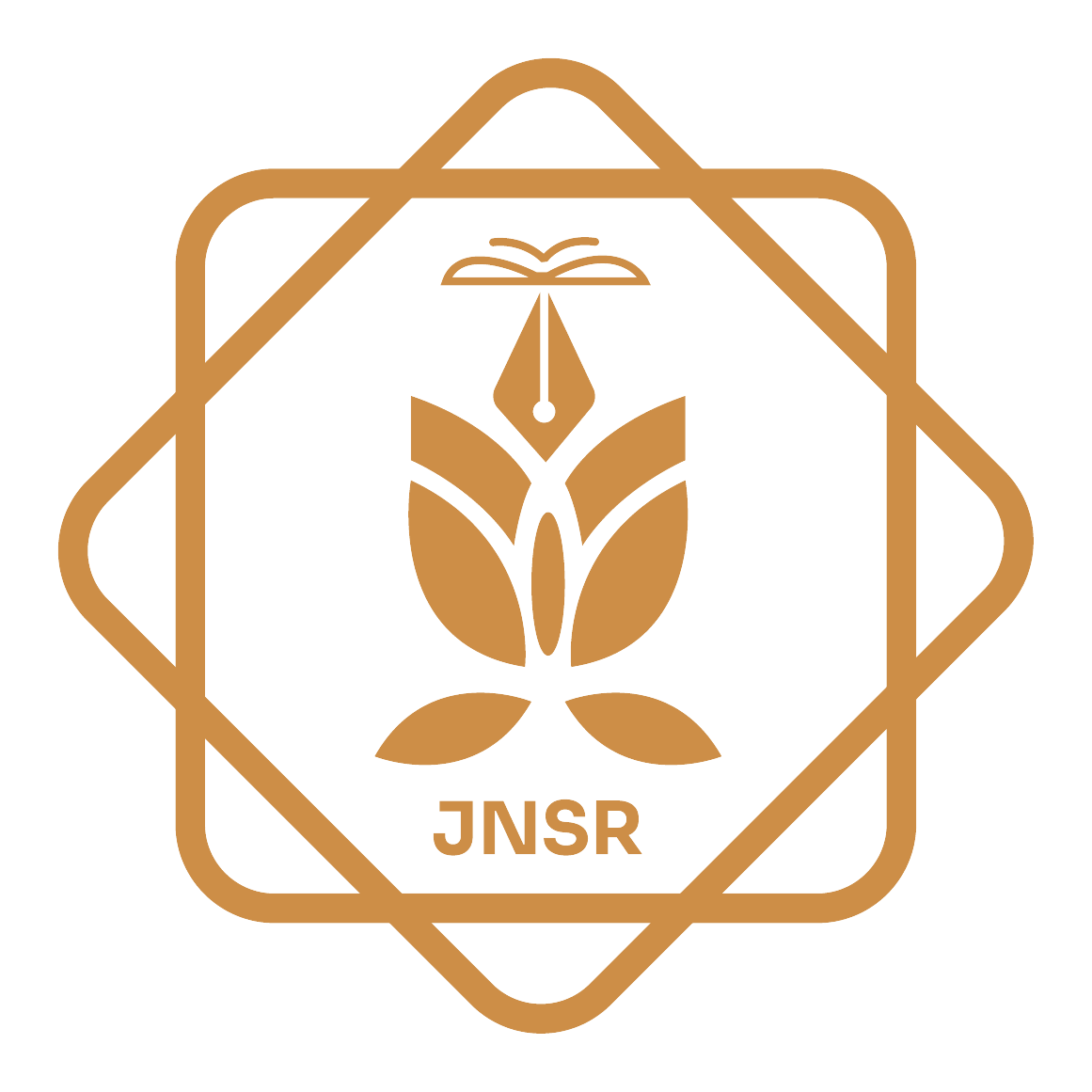The Role of Logar River in Sustaining Agricultural Production: A Case Study
DOI:
https://doi.org/10.62810/jnsr.v2i3.78Keywords:
Logar River, Agriculture, Economic evaluation, Irrigation, Water resourcesAbstract
This study explores the impact of diminished water flow from the Logar River on water system practices and agricultural productivity within the Logar Province, Afghanistan. As climate change worsens water scarcity, nearby agriculturalists face critical challenges in maintaining trim yields and supporting their livelihoods. The research aims to quantify the percentage of agricultural products in the Logar Province that are directly attributed to the irrigation provided by the river and investigate the critical challenges faced in water management within the province, particularly in the context of climate change. Using quantitative data analysis and Geographic Information Systems (GIS), the research identifies trends and correlations between water availability and agricultural productivity. Around 61% of the total agricultural products within the Logar Province are ascribed to the Logar River, implying its central role in driving agricultural yield and maintaining agricultural production in the region. Approximately 90,740 people, constituting around 21% of the province's population, benefit specifically from the agricultural products irrigated by the Logar River.
Downloads
References
Ahmad, M., & Wasiq, M. (2004). Water resource development in Northern Afghanistan and its implications for Amu Darya basin. World Bank Working Paper. https://doi.org/10.1596/0-8213-5890-1 DOI: https://doi.org/10.1596/0-8213-5890-1
Ahmadzai, M. R., Ismail, M. H., Zaki, P. H., Magiman, M. M., & Bawon, P. (2024). Socioeconomic Characteristics and Satisfaction Level Across Forest Products and Vegetable Farming Of The Agroforestry Community In Khost Province, Afghanistan. Preprints. https://doi.org/10.20944/preprints202407.0664.v1 DOI: https://doi.org/10.20944/preprints202407.0664.v1
Beurs, K. M., & Henebry, G. M. (2008). War, drought, and phenology: Changes in the land surface phenology of Afghanistan since 1982. Journal of Land Use Science, 3(2–3), 95–111.https://doi.org/10.1080/17474230701786109 DOI: https://doi.org/10.1080/17474230701786109
Formoli, T. A. (1995). Impacts of the Afghan? Soviet War on Afghanistan’s Environment. Environmental Conservation, 22(1), 66–69. https://doi.org/10.1017/S0376892900034093 DOI: https://doi.org/10.1017/S0376892900034093
Galioto, F., Chatzinikolaou, P., Raggi, M., & Viaggi, D. (2020). The value of information for the management of water resources in agriculture: Assessing the sustaining agricultural production viability of new methods to schedule irrigation. Agricultural Water Management, 227, 105848. https://doi.org/10.1016/j.agwat.2019.105848 DOI: https://doi.org/10.1016/j.agwat.2019.105848
Karamian, F., Mirakzadeh, A. A., & Azari, A. (2023). Application of multi-objective genetic algorithm for optimal combination of resources to achieve sustainable agriculture based on the water-energy-food nexus framework. Science of The Total Environment, 860, 160419. https://doi.org/10.1016/j.scitotenv.2022.160419 DOI: https://doi.org/10.1016/j.scitotenv.2022.160419
Jawhar, S. A., ÇAM, M. A., Habibi, E., & Yilmaz, Ö, F. (2024). Effects of Climate Change on Animal Production. Journal of Natural Science Review, 2(2), 1-14. DOI: https://doi.org/10.62810/jnsr.v2i2.30 DOI: https://doi.org/10.62810/jnsr.v2i2.30
Ma, Q., Yang, Y., Sheng, Z., Han, S., Yang, Y., & Moiwo, J. P. (2022). Hydro-sustaining agricultural production model framework for achieving groundwater, food, and economy trade-offs by optimizing crop patterns. Water Research, 226, 119199. https://doi.org/10.1016/S0378-3774(98)00069-9
Ma, Q., Yang, Y., Sheng, Z., Han, S., Yang, Y., & Moiwo, J. P. (2022). Hydro-sustaining agricultural production model framework for achieving groundwater, food, and economy trade-offs by optimizing crop patterns. Water Research, 226, 119199. https://doi.org/10.1016/j.watres.2022.119199 DOI: https://doi.org/10.1016/j.watres.2022.119199
Mujeeb, M., Safi, L., & Mirzazada, A. (2024). Comparison of Newton Raphson – Linear Theory and Hardy Cross Methods Calculations for a Looped Water Supply Network. Journal of Natural Science Review, 2(2), 75-90. DOI: https://10.62810/jnsr.v2i2.40 DOI: https://doi.org/10.62810/jnsr.v2i2.40
Mullick, M. R. A., Babel, M. S., & Perret, S. R. (2013). Marginal benefit based optimal water allocation: case of Teesta River, Bangladesh. Water Policy, 15(S1), 126-146. https://doi.org/10.2166/wp.2013.004 DOI: https://doi.org/10.2166/wp.2013.004
Osama, S., Elkholy, M., & Kansoh, R. M. (2017). Optimization of the cropping pattern in Egypt. Alexandria Engineering Journal, 56(4), 557-566. https://doi.org/10.1016/j.aej.2017.04.015 DOI: https://doi.org/10.1016/j.aej.2017.04.015
Pourmohamad, Y., Alizadeh, A., Baygi, M. M., Gebremichael, M., Ziaei, A. N., & Bannayan, M. (2019). Optimizing cropping area by proposing a combined water-energy productivity function for Neyshabur Basin, Iran. Agricultural Water Management, 217, 131-140. https://doi.org/10.1016/j.agwat.2019.02.040 DOI: https://doi.org/10.1016/j.agwat.2019.02.040
Qureshi, M. E., Connor, J., Kirby, M., & Mainuddin, M. (2007). Sustaining agricultural production assessment of acquiring water for environmental flows in the Murray Basin. Australian Journal of Agricultural and Resource Sustaining agricultural productions, 51(3), 283-303. https://doi.org/10.1111/j.1467-8489.2007.00383.x DOI: https://doi.org/10.1111/j.1467-8489.2007.00383.x
Salmoral, G., Rey, D., Rudd, A., De Margon, P., & Holman, I. (2019). A probabilistic risk assessment of the national sustaining agricultural production impacts of regulatory drought management on irrigated agriculture. Earth's Future, 7(2), 178-196. https://doi.org/10.1029/2018EF001092 DOI: https://doi.org/10.1029/2018EF001092
Uhl, V. W. (2006). Afghanistan: An overview of ground water resources and challenges. Ground Water, 44(5), 626–627. https://doi.org/10.1111/j.1745-6584.2006.00251.x DOI: https://doi.org/10.1111/j.1745-6584.2006.00251.x
You, L., Ringler, C., Wood-Sichra, U., Robertson, R., Wood, S., Zhu, T., ... & Sun, Y. (2011). What is the irrigation potential for Africa? A combined biophysical and sociosustaining agricultural production approach. Food Policy, 36(6), 770-782. https://doi.org/10.1016/j.foodpol.2011.09.001 DOI: https://doi.org/10.1016/j.foodpol.2011.09.001
Downloads
Published
How to Cite
Issue
Section
License
Copyright (c) 2024 Mujeebullah Mujeeb, Mujib Rahman Ahmadzai, Hayatullah Mushwani

This work is licensed under a Creative Commons Attribution-NonCommercial 4.0 International License.

























